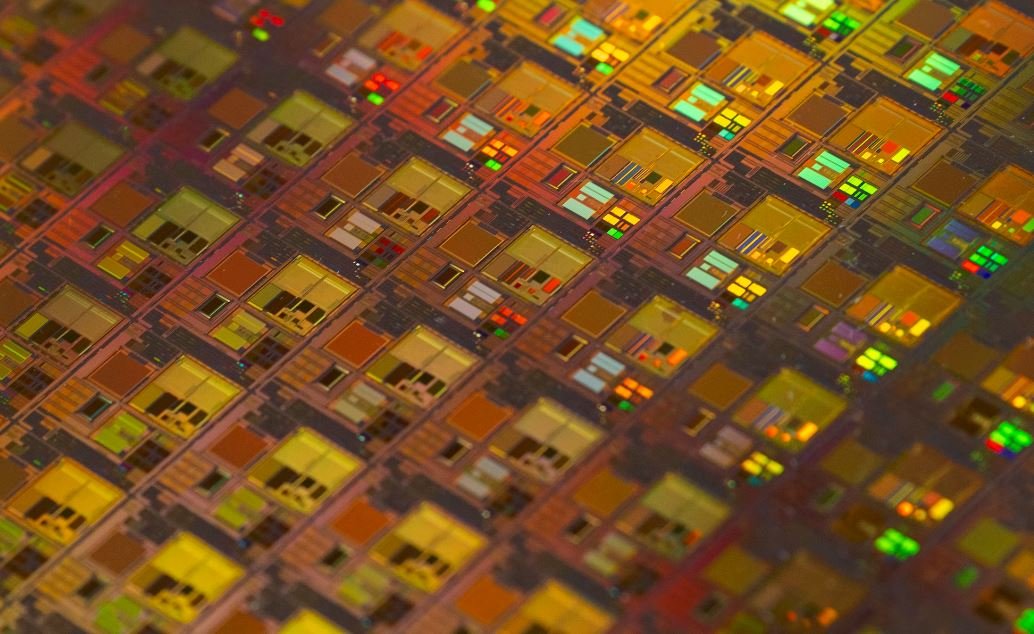Application Layer
The Application Layer is an essential part of the Internet Protocol Suite (TCP/IP) and is responsible for facilitating communication between software applications running on different devices connected to a network. It provides a standardized interface for applications to access network services and exchange data.
Key Takeaways:
- The Application Layer is a crucial component of the TCP/IP protocol stack.
- It allows software applications to communicate with each other over a network.
- The Application Layer provides a standardized interface for accessing network services.
- It enables data exchange between applications using various protocols.
The Application Layer acts as the bridge between the software applications and the underlying network infrastructure. Whether you’re browsing the web, sending an email, or streaming a video, the Application Layer ensures that the communication between your device and the remote server is established and data is transferred correctly.
Protocols at the Application Layer:
At the Application Layer, several protocols are commonly used to enable different types of communication and data exchange:
- HTTP (Hypertext Transfer Protocol): The foundation of the World Wide Web, allowing the retrieval and display of web pages.
- SMTP (Simple Mail Transfer Protocol): Used for sending and receiving emails over the internet.
- FTP (File Transfer Protocol): Facilitates file transfers between computers on a network.
- DNS (Domain Name System): Translates domain names into IP addresses, enabling easy access to websites.
- SSH (Secure Shell): Provides secure remote access to networked devices.
These protocols enable seamless communication and data exchange across the internet, facilitating a wide range of online activities.
Application Layer Services:
In addition to protocol support, the Application Layer provides various services to ensure efficient and reliable communication:
- Process-to-Process Communication: Applications on different devices can establish connections and exchange data.
- Error Handling: Detecting and managing errors to ensure data integrity.
- Data Formatting and Encryption: Formatting data into appropriate formats for transmission and encrypting sensitive information.
- Routing and Addressing: Determining the optimal path for data transfer and addressing network devices.
The Application Layer services go beyond basic data transmission, providing additional functionality to enhance security, reliability, and efficiency during communication.
Examples of Application Layer Protocols:
Let’s take a closer look at some popular Application Layer protocols and their specific functions:
| Protocol | Main Function |
|---|---|
| HTTP | Retrieving and displaying web pages |
| SMTP | Sending and receiving emails |
| FTP | Transferring files between computers |
These protocols serve as the backbone for various internet services, allowing users to access and utilize different applications seamlessly.
Conclusion:
The Application Layer is an integral part of the TCP/IP protocol stack and plays a crucial role in facilitating communication between software applications. It provides a standardized interface, supports various protocols, and offers additional services to ensure efficient and secure data exchange. Without the Application Layer, the internet as we know it today would not be possible.

Common Misconceptions
1. The Application Layer is the same as an application
One common misconception is that the Application Layer refers to a specific application or software program. However, the Application Layer actually refers to the topmost layer of the OSI (Open Systems Interconnection) model, which is responsible for providing communication services directly to user applications. It is not limited to any specific application.
- The Application Layer is not tied to a particular software program.
- It provides services for various applications within a network.
- It is responsible for user authentication and data encryption.
2. The Application Layer controls the entire networking process
Another misconception is that the Application Layer controls and manages the entire networking process. In reality, the Application Layer is only responsible for the communication services between applications running on different devices. It does not control the lower layers of the networking stack.
- The Application Layer relies on lower layers for data transmission and network routing.
- It focuses on interacting with user applications and providing application-specific services.
- It does not handle low-level networking protocols directly.
3. The Application Layer is only applicable to the internet
Some people believe that the Application Layer is only relevant for internet-based applications. However, the Application Layer exists in all types of networks, including local area networks (LANs) and wide area networks (WANs). Its purpose remains the same – to provide communication services to user applications.
- The Application Layer operates on different types of networks, not just the internet.
- It ensures application compatibility and data exchange across different networks.
- It facilitates communication between applications, regardless of the network type.
4. The Application Layer is solely responsible for application performance
Many people mistakenly assume that the Application Layer is solely responsible for the performance of applications. While the Application Layer may influence the user experience to some extent, application performance depends on various factors, including network infrastructure, the underlying hardware, and the design and implementation of the application itself.
- The Application Layer relies on lower layers to transfer data efficiently.
- Application performance is affected by network congestion and latency.
- The application’s code and design also play a crucial role in performance.
5. The Application Layer only deals with displaying information
Some individuals mistakenly believe that the Application Layer is solely responsible for displaying information to the user. While the Application Layer may include elements related to user interface design, it is primarily focused on facilitating communication between applications and providing services such as data compression, encryption, and authentication.
- The Application Layer ensures the correct exchange of data between applications.
- It provides services like data compression and encryption for secure communication.
- User interface design is a separate aspect and not exclusive to the Application Layer.

Increased Data Traffic on Messaging Apps
With the rise of smartphone usage, messaging apps have become extremely popular for communication. This table showcases the average number of messages sent per day on popular messaging apps in 2020.
| App | Number of Messages Sent per Day |
|---|---|
| 100 billion | |
| Messenger (Facebook) | 30 billion |
| 27 billion | |
| Telegram | 15 billion |
Streaming Services Revenue Comparison
The advent of digital streaming services has transformed the entertainment industry. This table displays the revenue comparison between popular streaming platforms in 2019.
| Streaming Service | Revenue (in billions USD) |
|---|---|
| Netflix | 20.2 |
| Amazon Prime Video | 9.2 |
| Hulu | 2.6 |
| Disney+ | 1.9 |
Global Internet Users
The internet has experienced remarkable growth in the number of users worldwide. This table presents the total number of internet users categorized by regions in 2020.
| Region | Number of Internet Users (in billions) |
|---|---|
| Asia | 2.5 |
| Europe | 0.8 |
| Africa | 0.5 |
| Americas | 1.2 |
Top Selling Smartphone Brands
The smartphone market is highly competitive, and this table highlights the top-selling brands worldwide in 2020.
| Brand | Market Share (%) |
|---|---|
| Samsung | 20.9 |
| Apple | 14.8 |
| Xiaomi | 11.2 |
| Huawei | 8.9 |
Usage Statistics of Social Media Platforms
Social media platforms have become integral parts of people’s lives. This table displays the average daily usage of different social media platforms in 2020.
| Platform | Average Daily Usage (in minutes) |
|---|---|
| 58 | |
| 53 | |
| 17 | |
| 9 |
Rise of E-commerce Sales
E-commerce has witnessed significant growth in recent years. This table represents the global e-commerce sales volume in 2020.
| Category | Sales Volume (in billions USD) |
|---|---|
| Electronics | 3,000 |
| Apparel and Accessories | 2,000 |
| Home Goods | 1,500 |
| Beauty and Personal Care | 900 |
Growth of Mobile Banking
The convenience of mobile banking has led to its widespread adoption. This table presents the growth rate of mobile banking users between 2015 and 2020.
| Year | Growth Rate (%) |
|---|---|
| 2015 | 45 |
| 2016 | 54 |
| 2017 | 62 |
| 2018 | 71 |
Global Smartphone Penetration Rate
Smartphone usage has become widespread across the globe. This table displays the smartphone penetration rate by region in 2020.
| Region | Penetration Rate (%) |
|---|---|
| North America | 85 |
| Western Europe | 75 |
| East Asia | 80 |
| Middle East | 68 |
Advancements in Artificial Intelligence
Artificial Intelligence (AI) has revolutionized various industries. This table presents the year when some significant AI advancements were made.
| Advancement | Year |
|---|---|
| Deep Learning | 2012 |
| Self-Driving Cars | 2013 |
| Virtual Assistants | 2011 |
| Image Recognition | 2015 |
The application layer encompasses various aspects of modern technology, from messaging apps and streaming services to e-commerce and artificial intelligence. This article explored several interesting points related to the application layer, including increased data traffic on messaging apps, revenue comparison of streaming services, internet user statistics, smartphone brand market shares, social media usage, e-commerce sales, mobile banking growth, smartphone penetration rates, and AI advancements. These statistics highlight the significant impact of the application layer on our daily lives, shaping how we communicate, entertain ourselves, and conduct business.
Frequently Asked Questions
Application Layer
What is the application layer?
What are examples of application layer protocols?
- HTTP (Hypertext Transfer Protocol) – for web browsing
- SMTP (Simple Mail Transfer Protocol) – for email communication
- FTP (File Transfer Protocol) – for file transfer
- DNS (Domain Name System) – for translating domain names to IP addresses
- SSH (Secure Shell) – for secure remote access
- POP3 (Post Office Protocol) – for email retrieval
- IMAP (Internet Message Access Protocol) – for email access and storage
- SNMP (Simple Network Management Protocol) – for network management
What is the role of the application layer in networking?
What is the difference between the transport layer and the application layer?
How do application layer protocols ensure reliable data transmission?
What is the significance of the application layer in web communication?
Can application layer protocols be used for both client-server and peer-to-peer communication?
What happens if there is a failure in the application layer?
Can the application layer be bypassed in network communication?





